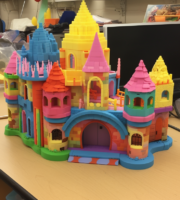On the off chance that you are still new to the weaving field, creation and digitizing for weaving patches can be a bit of overwhelming. Truly, weaving patches isn’t generally unique and troublesome from your standard weaving orders. For most embroiderers, the faltering or hesitance, to start with, is just there in light of the fact that they have not made a comparative showing previously. By and by, you need to begin sooner or later and, if that is the situation, why not as right on time as could be expected under the circumstances?
When you begin, weaved patches, are indeed, one of the most appreciated requests by digitizers. Because of their extraordinary fresh and strength, patches will consistently be one of the most savored pieces for enthusiastic embroiderers and clients the same. We will experience some standard acts of weaving and digitizing patches. As this post is fundamentally made for novices, we will keep it clear and compact, without enjoying multifaceted industry language.
Requesting And Deciding Raw Materials:
Indeed, even before the planning or digitizing for embroidery keychain, you need to arrange plain fixes whereupon the plan will rest. They are promptly accessible in a wide range of shapes and sizes. Round, square, oval or in some cases a custom shape is utilized. For sizes, there is an entire scope of it accessible. From 1 inch to a full-back, discovering patch sizes are an easy decision.
While finding exposed patches is simple, your determination ought to never be arbitrary. The choice ought to be driven by the decisions of your crowd and restrictions of your weaving machine. Extremely large or little sizes can be a constraint relying upon the machine you are utilizing.
After the size and shape contemplations, the quick thought is the shading. You can either pick the shade of the texture and play it safe or you can be inventive and evaluate different tones. The rear of fix is either plain or warmth delicate. By and by the decision is yours however here we will suggest purchasing the plain ones.
Not that heat-delicate ones are totally a no-gone zone, they are generally hard to fasten. Besides, applying it requires a warmth press to create sufficient warmth and weight. On the off chance that you are an apprentice or most noticeably awful, an amateur, going with heat touchy back methods instigating superfluous unpredictability to something that is still genuinely new to you. Clearly, not a shrewd choice!
Ultimately, you need to get a merrow shading. Merrow is that string which goes around the fringe of the fix. At the outskirts, there is a knock. This is the place where the strings are in the long run bolted once weaved.
Digitizing For Embroidery Patches:
Start by filtering your fix and get it in a graphical configuration. When done, open it in a digitizing programming. It will go about as a base whereupon the plan will be focused. Ensure that everything is pleasantly focused. Ensure that the plan is focused on the fix and the fix is additionally in the focal point of the framework. It will set everything set up as your plan consistently start and stop at the middle.
While digitizing for weaving patches, consistently accomplish your work at some good ways from the fringe. It is significant on the grounds that something else, the presser foot on the machine will press against it. This will cause bending issues during the creation stage. In addition, consistently hold fast to standard acts of digitizing weaving plans.
When finished with digitizing the weaving plan, it is the ideal opportunity for applying it. Prior to applying it, add a running fasten at the outside. This diagram will likewise start and stop at the middle. The reason for this layout is to clarify that where the fix should be. You can likewise cover your diagram with the plan to improve things.
While weaving, join the running fasten plot first. While digitizing, add a stop work here. It will stop the machine when the framework is embroidered patches. Use the diagram it to focus your clear fix before the plan is added to it.
As should be obvious, weaving patches are not generally troublesome. They are only somewhat extraordinary. The main test that can emerge during the cycle is adhering the fix to the texture. Fortunately there are various approaches to do it which just opens up the alternatives, and makes it simpler.
Staying The Embroidery Patches:
Initial one is pretty simple. You can essentially utilize a clingy sponsorship or stabilizer. On the off chance that you are to some degree acquainted with the weaving creation, stabilizers are an outright should.
The main distinction here is that these are the clingy ones.
One potential issue that can raise its head is the staying of the stabilizer with the needle. This will possibly occur in the event that you are weaving more than one fix in a solitary loop. It can cause regular string break which is unquestionably something you would prefer not to happen. The fix to this is cleaning the needle with a drop of machine oil with cotton.
The subsequent choice is to utilize a splash cement. Guarantee that the shower cement you use is explicitly fabricated for machine weaving. Apply the cement to the rear of the fix and let it dry. Presently, put it on the piece of clothing to check whether follows. On the off chance that the glue impact isn’t sufficient, shower another coat to guarantee the solid hold.
Alert here is to maintain a strategic distance from shower glue getting into the parts of the machine. It can truly cause issues with the typical working of the machine. As you would now be able to see, that weaving and digitizing weaving patches isn’t generally troublesome. All it requires is need a little consideration and practice to the size, shape, and nature of the fix.






